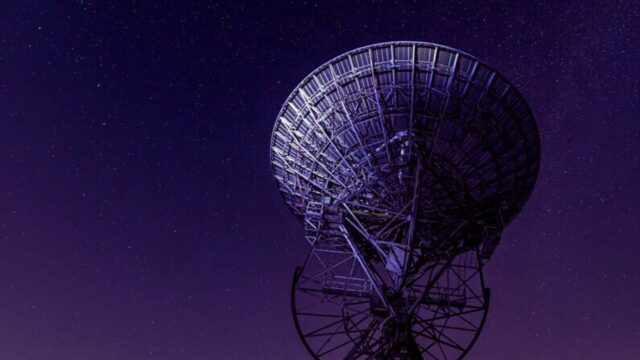A new study published this month in the journal Nature Astronomy reports the discovery of what scientists are calling “ultra-fast radio bursts”, mysterious signals from deep space that last for just ten millionths of a second.
These Newly Discovered Cosmic Flashes Are By Far the Shortest Duration Ever Observed, Forcing Rethinking of Their Origins
Previously, fast radio bursts (FRBs) – intense eruptions of radio waves from distant galaxies – were known to last for about a thousandth of a second, which is already very brief. But this new work builds on a 2021 study suggesting some FRBs could be even faster, lasting just millionths of a second. The identification of bursts lasting mere ten-millionths of a second is groundbreaking.
The findings come right after another recent bombshell discovery, when astronomers detected the oldest and most distant FRB ever found, originating from when the universe was about half its current age, around 8 billion years ago. This demonstrates FRBs have been occurring for most of the universe’s history.In addition, you can also read an article on- The Soviet Mathematician Who Solved the Mystery of Planet Formation
Astronomers Leverage Archived Data, Innovative Analysis to Catch These Elusive Bursts Lasting a Tiny Sliver of Time
“During our group meetings, we often talked about it,” said lead author Mark Snelders, a PhD candidate at the Netherlands’ University of Amsterdam and ASTRON. “By coincidence, I found out that there was a public dataset we could use for this.”
The diligent team obtained 5 hours of data on a known repeating FRB called FRB 20121102A, located about 3 billion light-years away. The data came from the Breakthrough Listen project, which searches for signs of intelligent alien life.
Using clever techniques, the researchers divided the first 30 minutes into 500,000 images per second. Applying innovative machine learning and filtering algorithms, they found 8 bursts lasting as little as 10 millionths of a second – an astonishingly short time, practically instantaneous in cosmic terms.
This indicates many more FRBs exist than previously estimated, with far greater diversity in duration than ever thought possible. It forces a complete reimagining of our understanding of their energy, origins and frequency. Additionally, you can also read about- The Big Bang Facts: 8 Amazing Things You Didn’t Know
Pushing Detection Limits to Map the Cosmos and Understand Mysteries of Space
Catching more of these ultra-fast bursts will require telescopes with very specialized technical capabilities. The dedicated team hopes probing FRBs will reveal groundbreaking insights into the gas between stars and galaxies that is still poorly understood.
Enigma Still Surrounds These Bizarre Cosmic Flashes, But Future Observations Could Hold Keys
FRBs were only discovered in 2007, and since then astronomers have slowly uncovered some of their secrets – most come from beyond our galaxy, but some originate inside the Milky Way. Yet so many questions remain about what causes these enigmatic explosions. If you want you can also read- 12 Bravest Animals Who Have Traveled to Space
Many more surprises undoubtedly await as future observations peel back the mysteries of these brief, brilliant beacons from across the universe. For now, their ultra-fast nature highlights how much we still have to discover in the deep cosmos.

















